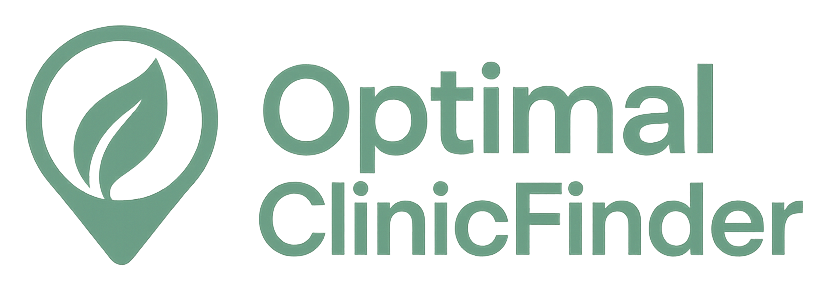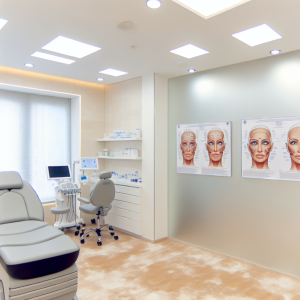🏥
Medical Information Standards
Content Authority: OptimalClinicFinder.com is a comprehensive medical directory platform connecting patients with qualified Facials providers. Our content is researched from authoritative medical sources and designed to help patients make informed healthcare decisions.
What Are Facials and How Do They Work?
Facials are professional skincare treatments performed by licensed estheticians or dermatologists that involve a multi-step process to cleanse, exfoliate, and nourish the skin. The basic mechanism involves removing dead skin cells, extracting impurities, and infusing beneficial ingredients to promote healthy skin renewal and hydration.
Types of Facials Available in 2025
The facial industry has evolved significantly, offering various specialized treatments:
💡
Did You Know?
Clinical studies show that Facials patients achieve excellent results when combined with professional-grade aftercare products.
- Classic European Facials: Deep cleansing, steam, extractions, and moisturizing
- HydraFacials: Medical-grade hydradermabrasion with serum infusion
- Chemical Peel Facials: Acid-based treatments for deeper exfoliation
- Microdermabrasion Facials: Mechanical exfoliation using crystals or diamond tips
- LED Light Therapy Facials: Targeted wavelengths for acne or anti-aging
- Oxygen Facials: Pressurized oxygen with customized serums
The Science Behind Facial Treatments
Modern facials work through multiple mechanisms of action. The cleansing phase removes surface debris and makeup, while steam opens pores for deeper cleaning. Exfoliation, whether mechanical or chemical, removes dead skin cells and promotes cellular turnover. Extraction removes blackheads and whiteheads manually or with specialized tools.
The treatment phase involves applying active ingredients like vitamin C, hyaluronic acid, or peptides that penetrate the freshly exfoliated skin. Massage techniques improve circulation and lymphatic drainage, while masks provide concentrated treatment based on skin type and concerns.
FDA Regulations and Professional Standards
While facials are not FDA-approved medical treatments, the devices and certain ingredients used may be FDA-regulated. Professional estheticians must be state-licensed and follow strict sanitation protocols. Medical facials performed by dermatologists or under physician supervision may use stronger ingredients or devices.
The Consultation Process
A proper facial consultation involves several key steps:
💡
Quick Tip
Facials works best when combined with healthy lifestyle choices for optimal results.
Skin Analysis
Licensed professionals use various tools including magnifying lamps, Wood’s lamps, or digital skin analyzers to assess skin type, condition, and concerns. This analysis determines the appropriate treatment protocol.
Medical History Review
Your provider will review medications, allergies, previous treatments, and current skincare routine. This information is crucial for treatment safety and effectiveness.
Treatment Planning
Based on the analysis, your esthetician will recommend specific facial types, frequency, and home care products. They’ll explain the process, expected results, and any potential side effects.
Step-by-Step Facial Process
Professional facials typically follow this sequence:
- Consultation and Analysis (10-15 minutes)
- Cleansing (5-10 minutes): Removal of makeup and surface impurities
- Steam Treatment (5-10 minutes): Opens pores and softens skin
- Exfoliation (10-15 minutes): Mechanical or chemical removal of dead skin
- Extractions (10-20 minutes): Manual removal of blackheads and whiteheads
- Treatment Application (15-20 minutes): Serums, masks, or specialized treatments
- Massage (10-15 minutes): Facial and neck massage for circulation
- Final Products (5-10 minutes): Moisturizer and sunscreen application
Recovery Timeline and Aftercare
Most basic facials require minimal downtime, but following proper aftercare is essential:
✓
Why Choose Facials?
●
Clinically proven
●
FDA approved
●
Minimal downtime
●
Long-lasting
Immediate Post-Treatment (0-24 hours)
- Avoid touching or picking at treated skin
- Apply gentle, fragrance-free moisturizer
- Use broad-spectrum SPF 30+ sunscreen
- Avoid makeup for 4-6 hours if possible
Short-term Care (1-7 days)
- Continue gentle skincare routine
- Avoid harsh scrubs or exfoliants
- Stay hydrated and avoid excessive sun exposure
- Some mild redness or sensitivity is normal
Long-term Maintenance
For optimal results, most people benefit from facials every 4-6 weeks, aligning with the natural skin cell turnover cycle. However, frequency may vary based on skin type, concerns, and treatment intensity.
Comparing Facials to Alternative Treatments
Understanding how facials compare to other skincare options helps in making informed decisions:
Facials vs. At-Home Skincare
While consistent home care is essential, professional facials offer deeper cleansing, professional-grade products, and expertise that can’t be replicated at home. The combination of both approaches typically yields the best results.
Facials vs. Medical Treatments
Dermatological procedures like laser treatments, injectables, or prescription medications address different concerns. Facials complement these treatments by maintaining skin health between procedures.
Choosing the Right Provider
Selecting a qualified professional is crucial for safe, effective results:
Credentials to Look For
- State esthetician license (verify through state board)
- Continuing education certifications
- Specialized training in specific techniques
- Professional association memberships
Facility Standards
- Clean, professional environment
- Proper sanitation protocols
- Quality equipment and products
- Clear pricing and policies
Latest Research and Clinical Studies
Recent studies in 2024-2025 have shown significant benefits of regular facial treatments:
🏆
Verified Providers Only
All our directory providers are licensed, experienced, and patient-safety focused.
- A 2024 study found that monthly facials improved skin hydration by 40% over 6 months
- Research indicates that professional extractions reduce acne lesions more effectively than home care alone
- Clinical trials show that combined treatments (facials + home care) improve skin texture and tone better than either approach alone
Insurance and Financing Options
Most cosmetic facials are not covered by insurance, but several payment options exist:
⚠️
Safety First
Always consult a qualified medical professional before starting Facials. Results vary by individual.
Payment Plans
Many spas and dermatology offices offer financing through companies like CareCredit or Cherry, allowing monthly payments for treatments.
Package Deals
Purchasing multiple sessions upfront often provides 10-20% savings compared to individual treatments.
Membership Programs
Some facilities offer monthly membership programs that include discounted services and products.
Special Considerations for Different Skin Types
Facial treatments should be customized based on individual skin characteristics:
Sensitive Skin
Requires gentle products, minimal extraction, and shorter treatment times. Patch testing is essential.
Acne-Prone Skin
Benefits from deeper cleansing, appropriate extractions, and antibacterial treatments. May require more frequent sessions initially.
Mature Skin
Focuses on hydration, collagen stimulation, and gentle exfoliation. May incorporate anti-aging ingredients and technologies.
Technology Integration in Modern Facials
2025 has seen significant technological advancement in facial treatments:
- AI-powered skin analysis for personalized treatments
- Nanotechnology for enhanced product penetration
- Advanced LED systems with multiple wavelengths
- Ultrasonic technologies for deeper cleansing
📚 Medical Authorities & Professional Standards
All Facials procedures should be performed by licensed medical professionals following established clinical guidelines and safety protocols.
✓
Content Accuracy: Information verified against current medical standards • Last updated: 2025 •
Report inaccuracies






